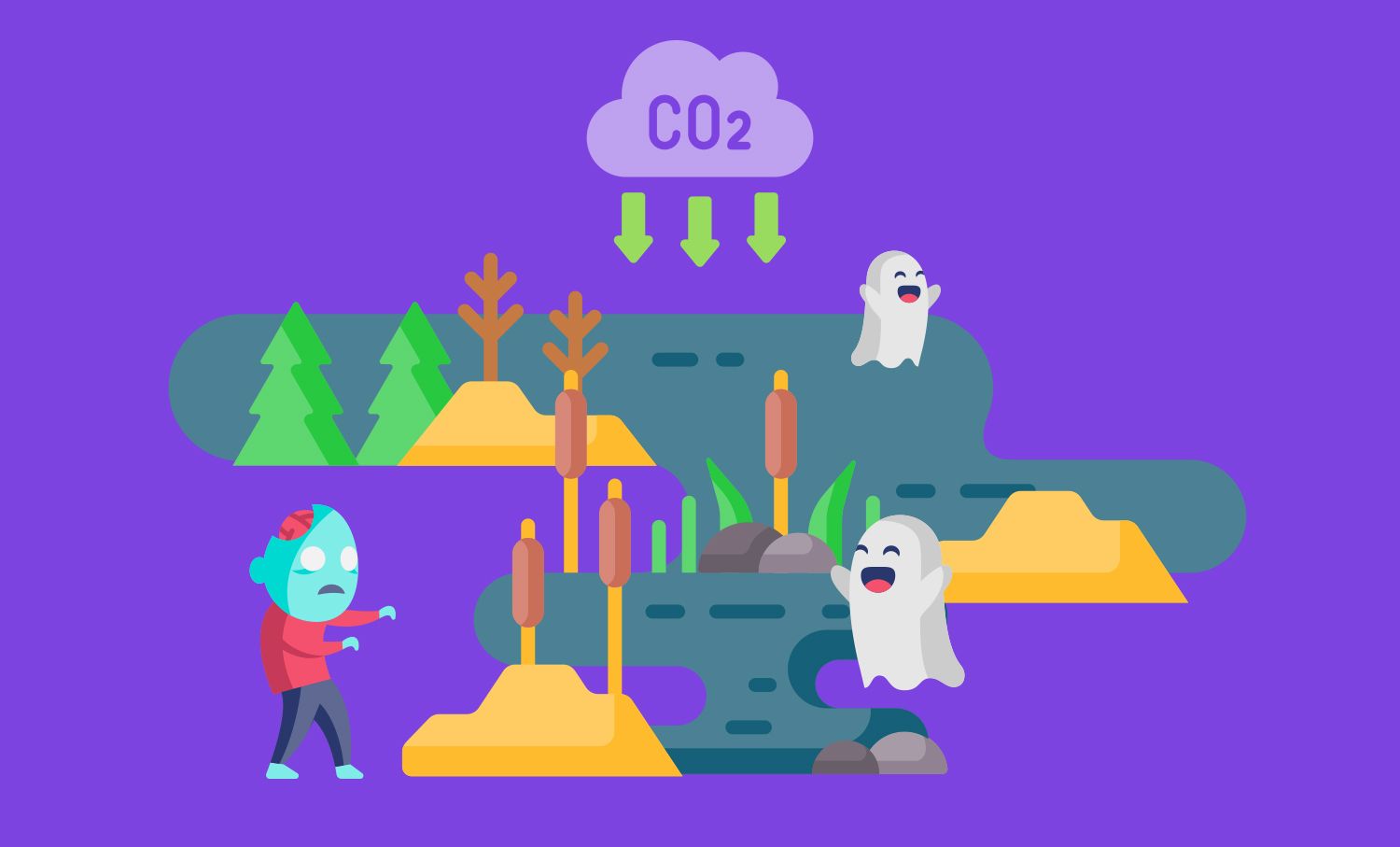Haunted Forests and Dark Depths: The carbon sequestration potential of the natural world
The natural world is full of natural carbon sinks that can sequester CO2.

Hauntings of the natural world
The natural world is shrouded in haunting stories and folklore. From bogs and forests, to the depths of the ocean, people have crafted legends and imagined horrors to explain things that they didn’t understand. Yet these same landscapes, captivating and frightening alike, possess a more enduring legacy: they are natural carbon sinks that can sequester CO2.
What is a carbon sink?
A carbon sink is something that is able to absorb and store carbon dioxide. Natural carbon sinks include the landscapes and living things described above: bogs, forests and oceans (among many others!). Certain agricultural practices can also enhance carbon sequestration in soils and vegetation.
Buried in the bogs
From Arthur Conan Doyle’s famous Sherlock Holmes adventure, the Hound of the Baskervilles, to will o’the wisps luring travellers in the Irish countryside, bogland (or moorland), was once a common feature in many parts of the world. However, due to development and overuse, bogland has decreased substantially.
With the potential to sequester carbon for thousands of years, bogland is a significant carbon sink. And as an often overlooked source of biodiversity, the degradation of bogland has a negative impact on a region’s flora and fauna.
Hiding amongst the trees
The forest abounds in dark legends and haunted specters. In cultures around the world, stories warn children of the dangers of wandering alone through the woods, and to this day, the forest remains a favorite setting of Hollywood horror films.
In the fight against climate change, though, it is the carbon stored within the trees, vegetation, and soil that attract the attention of scientists and environmentalists, rather than the beasts hiding in the dark. These terrestrial ecosystems absorb and store vast amounts of carbon dioxide from the atmosphere, helping to balance the planet's carbon cycle. Old growth forests are especially important, as they accumulate and store carbon for centuries.
However, deforestation, forest degradation, and unsustainable logging practices release stored carbon back into the atmosphere, contributing to global warming. Protecting existing forests, restoring degraded areas, and reforestation with native flora are just some steps that should be taken to preserve these natural carbon sinks.
Lurking in the deep
Oceans are perhaps the most well known carbon sink. They cover over 70% of the Earth's surface, making them a substantial player in the planet's carbon cycling processes. However, for over 200 years, the concentration of CO2 has increased in the atmosphere, and thus, the oceans as well. When CO2 enters the ocean, chemical reactions lead to an increased concentration of hydrogen ions, leading to ocean acidification.
Preserving and maintaining carbon sinks
In days gone by, the natural world was often regarded with respect for its awe-inspiring mystery. Today, that reverence can be founded upon the knowledge of its ecological significance and intricate complexities.
However, in addition to restoring these lands and waters, more sustainable practices must be adopted as well. Carbon sequestration, while an effective method, must be paired with decreased concentrations of GHG gasses being released into the atmosphere.
References